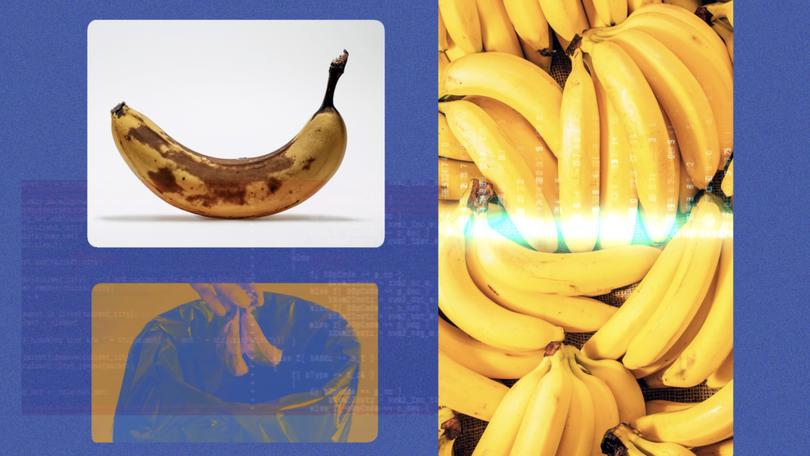The New York Times: AI is spying on the food we throw away

A hotel chain installs a camera in its trash bins to spy on what guests are tossing. Turns out its breakfast croissants are too big. Many are going to waste — along with profits.
A supermarket can suddenly see, hidden in its own sales data, that yellow onions aren’t selling as fast as red onions and are more likely to be trashed.
The brains behind both of these efforts: Artificial Intelligence.
Sign up to The Nightly's newsletters.
Get the first look at the digital newspaper, curated daily stories and breaking headlines delivered to your inbox.
By continuing you agree to our Terms and Privacy Policy.It’s part of an emerging industry that’s trying to cash in on a senseless human problem: The huge amount of uneaten food that goes from supermarkets and restaurants to the dumpster. Much of that, if it’s not composted, ends up in landfills where it decays, sending potent planet-warming greenhouse gases into the atmosphere.
Enter a new business opportunity. A company called Winnow has developed an AI tool that spies on restaurant garbage. Another, company, Afresh, digests supermarket data to look for wasteful mismatches between what a store is stocking, and what people are buying.
AI has a dirty environmental footprint of its own. Crunching huge amounts of data requires huge amounts of electricity. Nor can AI (yet) alter what the human brain has come to expect in modern, industrial societies: an abundance of fresh avocados at the supermarket all year, an ever-expanding variety of tiny plastic yogurt cups, heaving platters of nachos on happy hour menus.
Food Waste is a Big Problem
The two companies are part of an emerging industry trying to address a problem created by the modern food industry. In the United States, a third of food that’s grown is never eaten.
Globally, 1 billion metric tons of food went to waste in 2022, according to the U.N. Environment Program. Food waste accounts for 8% to 10% of global greenhouse gas emissions, roughly equal to emissions from aviation and shipping combined.
“It’s a problem that literally gets swept away,” said Marc Zornes, the founder of Winnow, which works with restaurants, hotels and institutional caterers.
Adding to the problem: confusing “best by” and “sell by” labels on food products that result in perfectly edible foods going into the trash.
Some Supermarkets Make a Dent
Signs of progress are emerging from a group of supermarket chains that voluntarily pledged to reduce food waste in their operations in the Western United States and Canada. Between 2019 and 2022, the eight chains that are a part of the Pacific Coast Food Waste Commitment project reported a 25% decline in their total volumes of unsold food.
They also reported donating more food to charities and sending more of their waste to compost facilities, which are scarce, instead of landfills.
“It demonstrates that the national goal to cut food waste in half by 2030 may, in fact, be possible, but we would need dramatically more action across all food-system sectors for that to happen,” said Dana Gunders, head of Refed, a research and advocacy group that tracks the voluntary project’s data.
There are many new tools now to help retailers cut waste. Some startups, like Apeel and Mori, offer coatings for fresh produce so they don’t spoil as fast. An app called Flashfood connects customers to discounted foods at grocery stores, similar to Too Good to Go, which connects customers to restaurants and grocers selling excess food at a discount.
How Many Eggs This Week?
Afresh’s technology grinds around six years of sales data on every product in the fresh foods section of a grocery store it works with. Its AI tool can divine when people buy avocados, and at what price. It can mash that up with data on how quickly avocados spoil and in turn advise how many avocados to stock.
If Easter egg painting season traditionally brings more egg sales, it can calculate how many more cases of eggs the store should order, and also, how many more bell peppers because shoppers usually make omelettes with the extra eggs at home.
While an experienced store manager would likely know this, said Matt Schwartz, co-founder of Afresh, the AI would offer more precise information about many more products. It could be recommended, for instance, that the store manager order 105 cases of eggs the week before Easter, rather than 110. “Every one case matters,” he said.
Also, said Suzanne Long, the sustainability chief for Albertson’s, which uses Afresh technology, experienced store managers are increasingly rare. “What the AI is doing is giving us the preciseness. Not just ‘I need to order onion’ but ‘this type of onion,’” she said.
Long said the chain has reduced food waste but declined to say by how much.
This Robot Does Not Dumpster Dive
Winnow installs cameras above garbage bins in restaurant kitchens. The images are fed into an algorithm that can tell the difference between a half-pan of lasagna (valuable) and a banana peel (not so much). A group of Hilton Hotels that rolled out the tool recently learned many of its breakfast pastries were too big — and also that baked beans were commonly left unfinished.
Refed, the research group, found in its 2022 estimates that 70 per cent of wasted food at restaurants is food that’s left on the plate, signalling a need to reconsider portion sizes.
Zornes works mainly with hotels and cafeterias. He estimates restaurants waste between 5% and 15% of the food they buy. “This is an obvious problem everyone knows about,” Zornes said. “It’s clearly a problem we’re not fixing.”
This article originally appeared in The New York Times.
© 2024 The New York Times Company
Originally published on The New York Times
